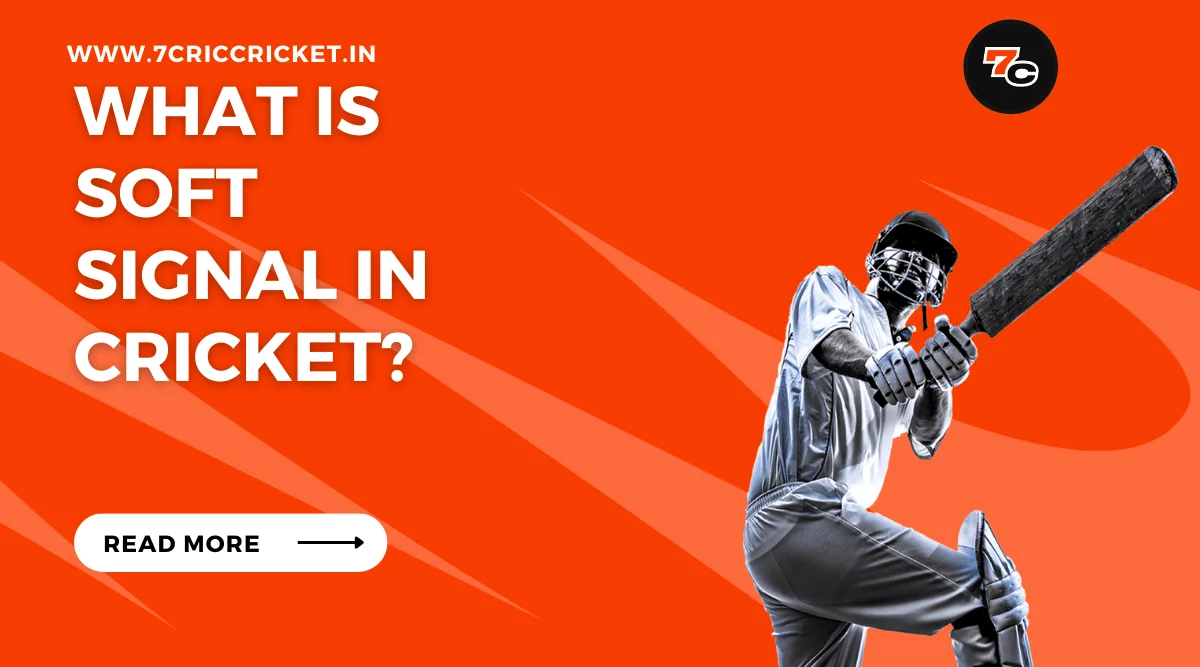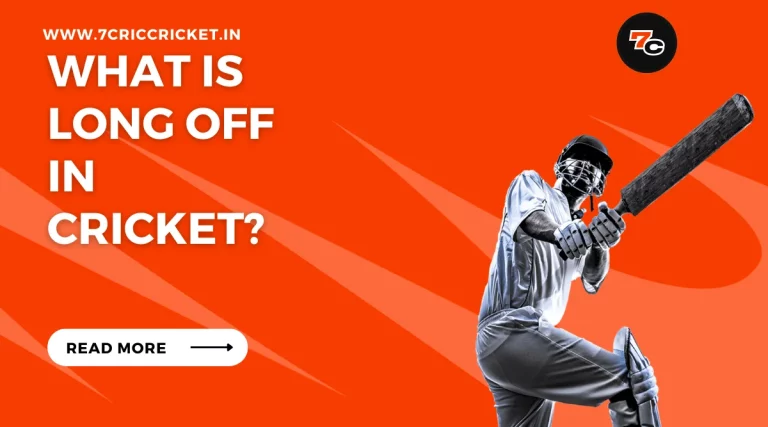What Is Soft Signal in Cricket?
Soft signal in cricket is a crucial aspect that often impacts match outcomes. It refers to the preliminary decision made by the on-field umpire regarding a catch or a boundary.
This article aims to provide an informative and analytical overview of what soft signal entails, the role of the on-field umpire, the process of soft signal review, and the controversies and challenges associated with it.
200% Spribe Aviator Welcome Bonus
200% Spribe Aviator Welcome Bonus
- Easy Sign-Up and Deposits
- The Biggest Bonuses in India
- 450% Bonus up to ₹1,000,000
By understanding this concept, cricket enthusiasts can gain insight into how soft signals shape the course of the game.
Summary & Key Takeaways
ShowDefinition of Soft Signal
The soft signal in cricket refers to the initial decision made by the on-field umpires regarding a catch or a run-out, which is then subject to review by the third umpire.
This system was introduced to ensure fairness and accuracy in decision-making, especially in situations where the on-field umpires may not have had a clear view of the incident.
The importance of the soft signal in decision-making cannot be overstated. It provides a baseline for the third umpire to work with when reviewing the incident.
Without a soft signal, the third umpire would have to rely solely on their own judgment, which could lead to inconsistencies and potential controversies.
The soft signal acts as a starting point for the review process, allowing the third umpire to determine whether there is enough evidence to overturn the on-field decision.
Furthermore, the soft signal has a significant impact on player reactions. When a catch or run-out is referred to the third umpire, players eagerly await the decision, and their emotions can run high.
The soft signal sets the tone for the players’ reactions, with an out signal leading to celebrations and jubilation, while a not out signal may result in disappointment and frustration.
It adds an element of suspense and drama to the game, as players eagerly anticipate the final decision from the third umpire.
Role of On-Field Umpire
The on-field umpire plays a crucial role in the soft signal system by making the initial decision regarding a catch or run-out.
Their decision is based on their on-field view and judgment, which can have a significant impact on the final outcome of the decision-making process.
Here is a breakdown of the role of the on-field umpire in the soft signal system:
Decision Making
The on-field umpire is responsible for making the initial decision when a catch or run-out is in question. They have to make a quick judgment based on what they see in real-time during the game.
Communication
Once the on-field umpire has made their decision, they communicate it to the players, spectators, and the third umpire. This communication is crucial in ensuring transparency and clarity in the decision-making process.
The role of the on-field umpire in the soft signal system has a direct impact on player decision making.
The initial decision made by the on-field umpire can influence how players react and respond to the situation. It can also affect their mindset and strategy going forward in the game.
The on-field umpire’s decision becomes the starting point for the review process, where the third umpire comes into play to provide additional evidence and analysis.
Process of Soft Signal Review
During the process of soft signal review in cricket, the on-field umpire’s initial decision is carefully examined and analyzed for its accuracy.
This review is conducted using video technology, which allows for a detailed analysis of the events leading up to the decision.
The use of video replays has revolutionized the game of cricket, providing a level of precision that was previously unattainable.
The decision-making process begins with the on-field umpire making a soft signal, which is a preliminary indication of their decision.
This signal is then reviewed by the third umpire, who carefully analyzes the available video footage to determine whether the on-field decision should be overturned or upheld.
The third umpire examines various angles and replays to ascertain whether the ball has been cleanly caught, whether a boundary has been scored, or whether a batsman has been dismissed.
They pay close attention to factors such as whether the ball has touched the ground, whether the fielder has complete control of the ball, and whether the ball has crossed the boundary rope.
Once the third umpire has completed their review, they communicate their decision to the on-field umpire, who then makes the final decision based on the information provided.
This process ensures that the correct decision is made, taking into account all available evidence and minimizing the chances of human error.
Controversies and Challenges
Controversies and challenges surrounding soft signal in cricket have sparked debates among players, officials, and fans alike.
While the introduction of the soft signal has aimed to provide more accurate decision-making, it has not been without its fair share of controversies.
One of the main controversies surrounding the soft signal is its subjective nature. The soft signal is often given by the on-field umpire based on their visual perception of the catch or run-out.
However, this has led to instances where the on-field decision seems to be influenced by factors such as home team advantage or player reputation, resulting in debates and criticisms.
In addition, the challenge system has also faced challenges of its own. The limited number of unsuccessful challenges per innings has been a bone of contention for teams, as it restricts their ability to overturn potentially incorrect decisions.
Furthermore, the reliance on technology and the interpretation of replays by the third umpire have also been subject to scrutiny, with some arguing that it introduces an element of uncertainty and inconsistency in decision-making.
Impact on Match Results
The subjective nature of the soft signal in cricket has raised concerns about its potential impact on match results. One of the main concerns is the influence of the soft signal on player decision making.
When a fielding team appeals for a catch or run-out, the on-field umpires often rely on their own judgment to give a soft signal of either out or not out.
This soft signal then influences the decision-making process of the third umpire, who reviews the incident using technology.
However, since the soft signal is subjective and based on the on-field umpire’s perception, it can introduce bias and affect the final decision.
The use of technology to validate soft signals has been suggested as a way to minimize the impact on match results.
The introduction of tools like Hotspot, Snicko, and Hawk-Eye has allowed for more accurate and objective decision-making in cricket.
These technologies provide additional evidence to supplement the soft signal and help the third umpire make a more informed decision.
By using these technologies, the subjective element of the soft signal can be minimized, ensuring fairer outcomes in matches.
Final Thought about Soft Signal in Cricket
In conclusion, the soft signal in cricket plays a crucial role in the decision-making process.
It refers to the initial decision made by the on-field umpire before referring it to the third umpire for review.
200% Spribe Aviator Welcome Bonus
200% Spribe Aviator Welcome Bonus
- Easy Sign-Up and Deposits
- The Biggest Bonuses in India
- 450% Bonus up to ₹1,000,000
This system has faced controversies and challenges due to the subjective nature of on-field judgments.
However, it significantly impacts match results as the soft signal often influences the final decision made by the third umpire.
Frequently Asked Questions (FAQs) about Soft Signal
Are the On-Field Umpires Required to Provide a Soft Signal for Every Close Decision?
The on-field umpires are not required to provide a soft signal for every close decision in cricket. The use of soft signals is intended to assist the third umpire in making a decision, but it does not guarantee accuracy or fairness to both teams.
Can the Third Umpire Overrule the On-Field Umpire's Soft Signal Without Clear Evidence?
The third umpire has the authority to overrule the on-field umpire’s soft signal if there is clear evidence to support the decision. This ensures that the final decision is based on objective evidence rather than subjective judgments.
How Does the Soft Signal System Affect the Players' Decision to Review a Decision?
The soft signal system in cricket can impact players’ trust in umpires and influence their decision to review a decision. Psychological factors such as doubt or confidence in the on-field umpire’s decision may play a role in this process.
What Happens if the On-Field Umpire Doesn't Give a Soft Signal for a Close Call?
If the on-field umpire doesn’t give a soft signal for a close call in cricket, it leaves the decision solely with the TV umpire. This can affect player emotions and highlights the importance of clear evidence in the soft signal system.
Has the Introduction of the Soft Signal System Reduced the Number of Controversial Decisions in Cricket?
The introduction of the soft signal system in cricket has had a significant impact on reducing the number of controversial decisions. This has been achieved by improving the effectiveness of the system and redefining the role of the third umpire.








